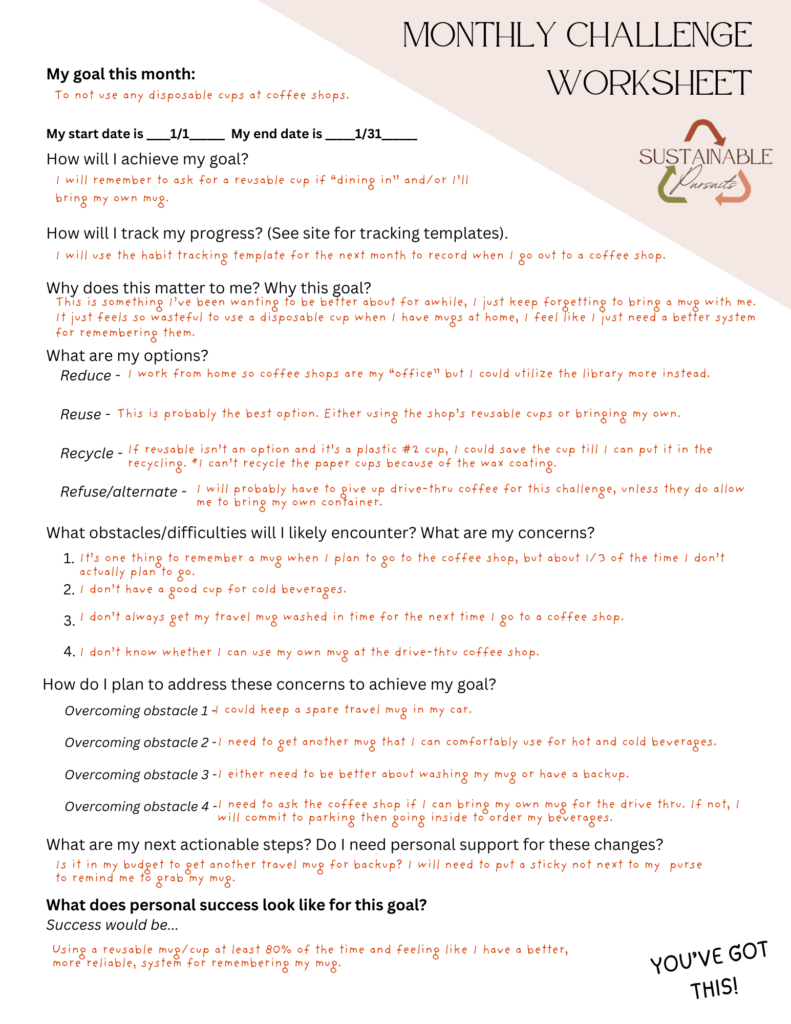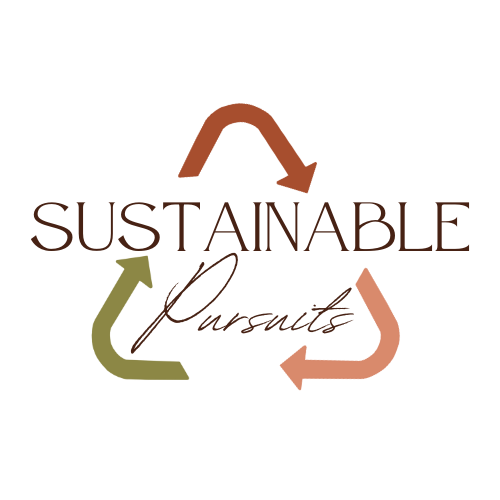I’ll be honest, it annoys me a little bit when I’m trying to find advice for eco-friendly living but all I get are quick tip snippets. And I realize it’s because eco-friendly living is about changing to better habits. And changing one’s habits is actually a multistep process. Don’t get me wrong, the tip snippets are good advice. They just don’t address some of the “how-to” elements of living more sustainably.
Maybe it’s just me, and most people are fine with a quick tip and can figure it out from there. That’s great if that’s the case. But for me, if I’m going to move forward with a project then I need a game-plan. I need different strategies I can apply if I’m going to make better habits. Figuring out strategies and priorities are some of the topics I hope to address with my blog posts and monthly plastic-free challenges.
What’s in this article
Monthly challenge worksheet to help with better habits
When I put together my personal plastic-free challenge, I thought about what type of structure and prepping would be the most helpful for better habits. I came up with this Monthly Challenge worksheet as my go-to. I’ve provided a downloadable version of the worksheet so you can use it for your own eco-friendly goals.
Downloadable version of Monthly Challenge worksheet for better habits
The image below is the Challenge Worksheet example. With the example of, “bringing a reusable mug to the coffee shop”. Be sure to read through it to get more clarity on the worksheet questions.

Section 1 of the worksheet
The first section of the worksheet is about the goal itself – focusing on who, what, where, when, and why. For those of you who know about SMART criteria for goal setting, this section should look very familiar.
Section 2 of the worksheet
The second section is about figuring out what your options are for reducing, reusing, recycling, and refusing the specific item. This will help you set your personal parameters and help with decision-making. It’s also a great opportunity to explore more of the resources available in your community, whether they be local or online. Just to clarify, on the worksheet, there is an option for “refuse/alternate” – this is for figuring out alternates you can use if you choose to refuse the item.
Section 3 of the worksheet
The third section is a chance to really reflect on what problems you might encounter and what you’re most concerned about. Try to consider what the biggest obstacles or struggles are for you. Then write out how you plan to overcome those problems and struggles. Think back on previous experiences, what worked for you and what didn’t.
4th section of the worksheet
Now that you’ve figured out your goal and how to achieve it, the fourth section is where you’re going to list your next steps. Your next steps should have an actionable component like “getting a …”, or “make a spot for…”. Don’t forget to list any additional support you might need for this goal.
Final question of the Better Habits worksheet
That brings us to the final question, identifying what personal success looks like for this challenge. If it’s an activity or habit you want to improve, then decide what percentage of attempts need to be successful (see example). If you’re trying to change out a plastic dependent habit for an alternative, success could be defined by what skills or recipes you hope to learn by the end of the challenge, along with successful attempts.
Tracking sheet for better habits
Along with the monthly challenge worksheet, I’ve also made a tracking sheet to help with making better habits. This tracking sheet focuses on home habits. Feel free to download it to help with your plastic-free/eco-friendly goals.
Downloadable Tracking Sheet for Better Habits at Home
That about covers everything for the Eco-challenge worksheet. Be sure to share in the comments section about any of the sustainable habits you’d like to establish in your life!

